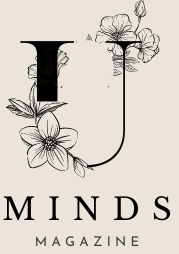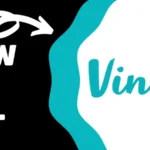In the fast-paced digital design world, wallpapers and GIFs have evolved from simple static images to dynamic, engaging pieces of art. Whether you’re setting the background on your phone or sharing a funny GIF with friends, the way we interact with visual media has changed dramatically over the years. A deeper understanding of how these elements have developed provides insight into how they shape our digital experiences today.
One interesting development in this domain has been the concept represented by the keyword wallpaper:tn9ax8huhxq= gif. This keyword might not be commonly known, but it points to the blending of two powerful forms of digital imagery—wallpapers and GIFs.
A Brief History of Wallpapers in the Digital World
Digital wallpapers date back to the early days of personal computers, where users could customize their desktop screens. Originally, computer wallpapers were only solid colors or simple patterns that gave some visual relief from the standard gray or black screens. As screen technology improved, so did the variety of wallpapers available.
In the 1990s and early 2000s, wallpapers took on a new life—the advent of more advanced display screens allowed for the use of detailed photographs and artwork. Platforms like Windows and Mac OS offered built-in galleries of scenic images, abstract art, and custom themes, giving users the ability to express themselves through their wallpaper choices.
Fast forward to today, and digital wallpapers are far more complex. High-resolution displays demand high-quality images, and people often choose ultra-HD wallpapers to maximize the visual appeal of their devices. But the most significant innovation comes from the introduction of dynamic wallpapers, particularly animated GIF wallpapers, which blend elements of motion and art. Keywords like wallpaper:tn9ax8huhxq= gif are a sign of this trend, pointing toward the future of customization in digital aesthetics.
The Rise of GIFs in Digital Communication
GIFs (Graphics Interchange Format) have been around since 1987, but they surged in popularity in the mid-2010s with the rise of social media and messaging platforms. What started as a basic way to share low-resolution images quickly turned into a global sensation for communication.
The primary appeal of GIFs lies in their ability to loop continuously, creating the illusion of movement while using relatively little data compared to video formats. GIFs found their first mainstream use in web design, where small animations could make a website more engaging without slowing it down.
With the rise of platforms like Giphy and Tenor, GIFs became a major part of online conversation. Instead of using words, users could send an expressive animation that captured their feelings in a split second. GIFs became a form of cultural currency—expressions of humor, emotion, and even political commentary.
Over time, the connection between wallpapers and GIFs became more apparent. It was only a matter of time before people started using GIFs as dynamic wallpapers, leading to a new frontier of digital art. The keyword wallpaper:tn9ax8huhxq= gif seems to capture this merging of the two trends, offering a shorthand for combining the aesthetic appeal of wallpapers with the dynamism of GIFs.
Why People Are Using Animated Wallpapers
As customization options for digital devices continue to grow, people are increasingly interested in ways to make their user interfaces more engaging. Static images can only go so far in terms of personalization. This is where animated wallpapers, especially GIF-based wallpapers, come into play.
The key benefits of animated wallpapers include:
- Visual engagement: Animated wallpapers can make your device feel more lively. The movement catches the eye and can set the tone for your device, whether it’s a calming scene or an energizing pattern.
- Personal expression: People love to express their personalities through their digital devices. Animated wallpapers allow for more creativity and customization than a traditional static image. By using a GIF, you can display everything from your favorite movie scenes to looping visual art pieces.
- Dynamic design: A static wallpaper can quickly feel boring after a while, but an animated GIF keeps things fresh. Since GIFs can be made to loop seamlessly, they can create the illusion of an ever-changing background.
The keyword wallpaper:tn9ax8huhxq= gif highlights the growing trend of using GIFs as wallpapers. While this specific string of characters may refer to a particular type or style of animated wallpaper, the concept it represents is widespread: people want their devices to feel personal and alive.
Challenges with Animated Wallpapers
Despite the appeal of animated wallpapers, there are still a few challenges that prevent them from becoming the default for most users. One issue is performance. Animated wallpapers can drain a device’s battery more quickly than static images. This is particularly true for smartphones, where every bit of battery life counts.
Another challenge is the file size of GIFs. While GIFs are generally smaller than videos, high-quality, long-looping GIFs can still take up significant storage space. Users need to strike a balance between visual quality and performance.
Additionally, not all devices support animated wallpapers. While some Android devices offer the ability to use GIFs as wallpapers, iOS users have to rely on Live Photos or specialized apps to get the same effect. This fragmentation can make it difficult for GIF wallpapers to gain universal adoption.
The Future of Digital Wallpapers and GIFs
As digital devices continue to evolve, so too will the way we interact with visual content. The keyword wallpaper:tn9ax8huhxq= gif symbolizes the growing convergence of static and dynamic elements in digital design. In the future, we can expect even more advanced forms of dynamic wallpapers, perhaps incorporating elements of augmented reality (AR) or real-time data feeds.
Some potential innovations in the realm of digital wallpapers include:
- Interactive wallpapers: Future wallpapers might not just be animated but interactive as well. Imagine a background that changes based on your location, the time of day, or even your mood.
- 3D wallpapers: With the advent of 3D displays, we could see wallpapers that add a sense of depth and dimension to your device’s home screen. Combining 3D technology with the looping nature of GIFs could create stunning, immersive backgrounds.
- Personalized AI-driven wallpapers: As AI becomes more integrated into daily life, we may see wallpapers that adapt to your preferences automatically. An AI could curate GIFs or wallpapers that match your style and update them based on trends or even your activity.
The keyword wallpaper:tn9ax8huhxq= gif points to the future possibilities that blend the best of both worlds: the static elegance of wallpapers and the dynamic energy of GIFs.
Have you read: How To Streamline Operations in Your Cold and Frozen E-Commerce Business
Conclusion
The intersection of digital wallpapers and GIFs offers exciting possibilities for the future of digital design. As illustrated by the keyword wallpaper:tn9ax8huhxq= gif, users are constantly seeking new ways to personalize and animate their digital environments. Whether it’s a smartphone screen or a desktop monitor, animated wallpapers are quickly becoming a staple in the world of digital aesthetics.
However, the rise of GIF wallpapers does come with its own set of challenges, from battery consumption to file sizes. As technology improves and devices become more efficient, these barriers will likely be overcome, allowing for even more sophisticated animated wallpapers.
In summary, the evolution of wallpapers from static images to dynamic GIFs is a reflection of how far digital design has come. The keyword wallpaper:tn9ax8huhxq= gif may seem cryptic, but it captures the essence of this transformation. As we move forward, we can expect to see even more innovations in the way we customize and engage with the visual aspects of our digital devices.



